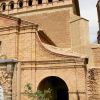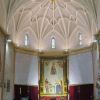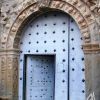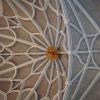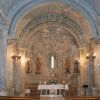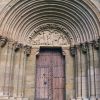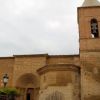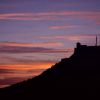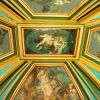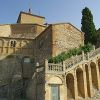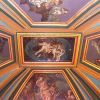Monumentos
San Andrés de Nasarre. Rodellar

A pretty path leaves from the Honguera neighbourhood of Rodellar and passes through the abandoned village of Cheto at 801 metres altitude before descending down to the banks of the Mascún canyon. The path takes in a number of unusual and dramatic rock formations known locally as; Delfín, Cuca Bellostas, Ciudadela, Agujas, Caos, Beso and Los Oscuros. It also passes the Losa Mora dolmen and climbs up to Nasarre at 1199 metres above sea level.
The village, abandoned since the 1950s, is surrounded by barren land that was once cultivated. It once had a blacksmiths and a magnificent well with a vaulted chamber which was accessed by an underground staircase. The San Andrés chapel is set apart from the rest of the village.
All that remains of the original 11th century Romanesque construction is the cylindrical apse, with a deep, arched window, all made with rough ashlars. The exterior is decorated with a blind arcade with 11 small arches that rest on cantilevers. Those situated at the far ends are lower than the others. The gaps between the arches are filled by monolithic tympanums.
Above these and joining two pillars made of ashlars there is a frieze with a total of 43 vertical mouldings placed closed together that encircles the apse. They have a unique character that go towards differentiating this church from other Larredense Romanesque constructions; they are short and a good number of them are decorated on their open edge with oblique bands carved to resemble rope.
In the 17th century the church was renovated and the current nave, tower, vestry and doorway date back to this restoration. Inside the church, on the lintel above the entrance door to the vestry are the remains of a painted sign whose inscription relates to the renovations: "SI(ENDO) / RE(TOR EL) / REB (ERENDO) / MOPS (ENPE) / DRO (AGU)/ ILAR / 1628".
Church of Nuestra Señora. Azlor

The parish church is dedicated to Nuestra Señora de las Victorias (Our Lady of the Victories) in commemoration of the Battle of Lepanto. It was constructed almost entirely from ashlars with the exception of the beautiful brick gallery of semi-circular arches that crown its walls. As is usual in temples constructed at this time (16th century) it has a polygonal east end and a single nave that incorporates small side chapels. The interior is lit thanks to windows with pointed arches that still retain their original alabaster panes.
Its rapid construction took place between the 16th and 17th centuries, and the decoration of the entrance doorway, dated at 1610, announces the arrival of the Baroque era. This is evident in the bulbous style of the column shafts to the side of the entrance. The relief of the door jambs has a pre-Columbian air similar to the church of Olsón in Sobrarbe. Both buildings carry the mark of the master builder, Joan Torón, who, together with Antonio Torón, made up a dynasty of master constructors, which was responsible for many of the grand projects of Somontano: Naval (1580) and Colungo and Guardia (1585.) A closer look at the walls of this church reveals a plethora of marks left by the stone masons.
The tall tower that is fixed atop a rocky perch to the side of the church can be reached via a set of stairs carved from the rock. It has three parts; one square and two octagonal. The small turrets at the top of the tower were used to “conjure away” fierce storms.
Church of Nuestra Señora de la Asunción. Peralta de Alcofea
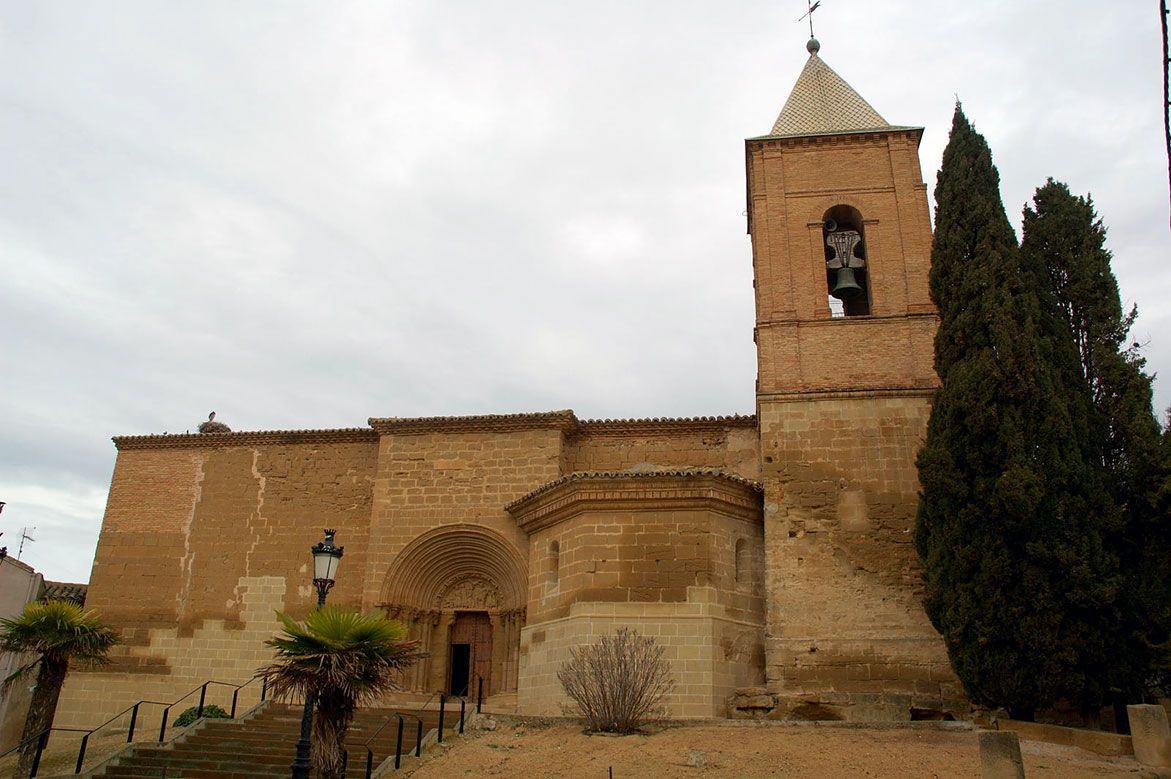
The church of Nuestra Señora de la Asunción in Peralta de Alcofea was built at the end of the 12th century. The structure and interior decoration reflect the Romanesque style; a semi-circular apse, a nave covered with a barrel vault and half columns with capitals roughly carved with vegetal and geometrical motifs.
However, construction was prolonged and continued into the 13th century, resulting in the incorporation of emerging Gothic influences as can be seen in the slight pointed aspect of the vault and the arches as well as the impressive splayed doorway.
Renovations were made to include the two side chapels in the 16th century, opening the first section of the nave with huge Renaissance doorways. The inscription that appears on the church’s exterior next to the entrance probably makes reference to these additions: ME FE ANO 1577.
The chapel to the south is covered with a stellar vault while the one to the north has an elliptic vault.
The entrance doorway is the only way to enter the chapel and represents the frontier between the normality of the outside world and the peace and calm of the interior; a place to pray and reflect. It has 6 archivolts, staggered in a way to form a funnel shape, giving the door a splayed appearance. The archivolts rest on columns that protrude from the wall, which are topped with highly decorated capitals. The lintel above the door is crowned by a semi-circular area known as the tympanum. This space offered a multitude of possibilities for including bas-relief and provided the medieval artist with a chance to shine.
Of the six archivolts, two have a geometric, chequered decoration and the one closest to the door reveals medieval tradesmen; a shepherd, knight, musician and weaver. In the centre there is a figure of God making a blessing.
The decorations of the capitals represent the deliberations of the soul’s actions at the Final Judgement and Adam and Eve at the Tree of Life followed by their expulsion from the Garden of Eden. Unfortunately, all of the sculptures are in poor condition.
The tympanum includes a scene from the Epiphany. The Virgin Mother is the central figure of the scene in which the three kings are worshipping the baby Jesus. They symbolize the three ages of man; youth, maturity and old age. To the far side of the scene, Joseph appears almost absent from the event, looking on distractedly with his head insolently supported on his right arm. He gives the impression of waiting in the corner until a tedious family get-together has finished.
The heads of two lions have been carved from the cantilevers that support the tympanum. If the house of a mortal has guard dogs, then it is fitting that the house of God should have the splendid figure of a lion with a proud mane and huge teeth. The lion to the right has a human figure between his jaws. This communicates that the lion is the guardian of a sacred place, which must be entered with a renewed spirituality that is clean of sins. The image represents the death of the earthly body and symbolises access to knowledge and everlasting life.
El Pueyo Monastery. Barbastro
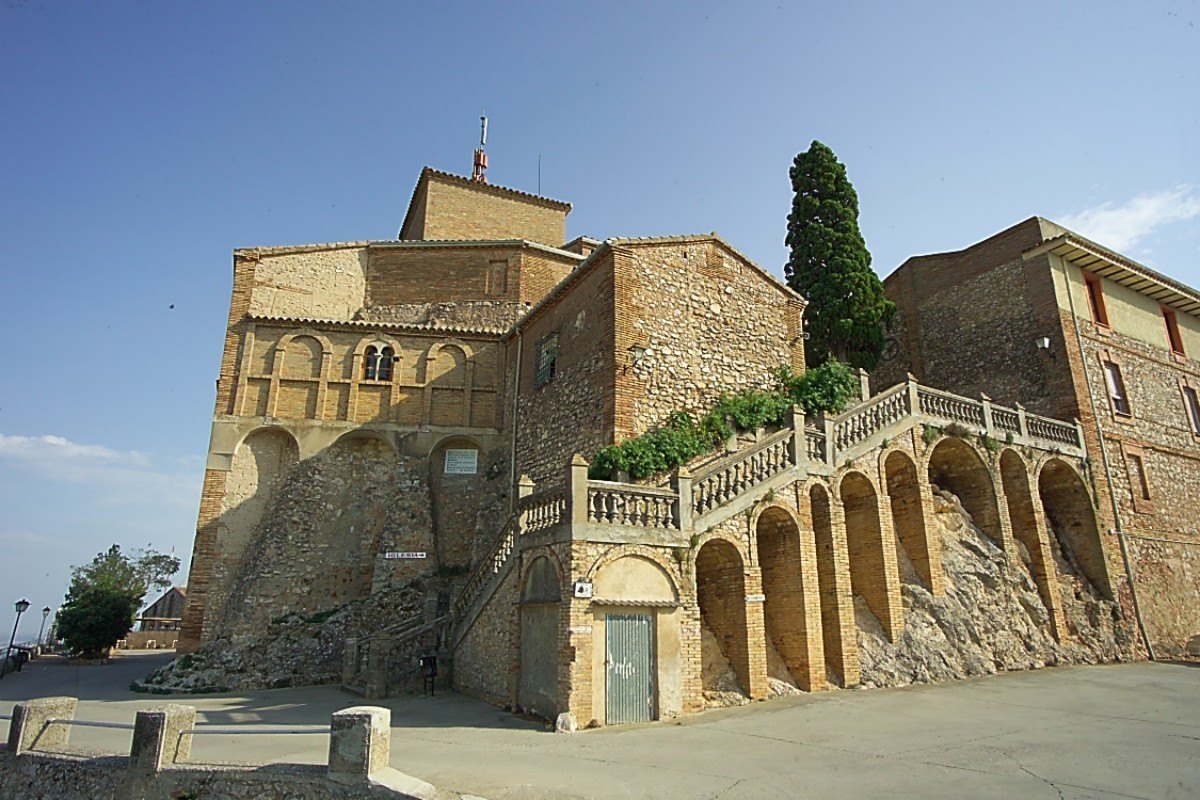
Historical records from the 11th century make reference to a castle that once stood on the site of the current building; a hill that soars to a height of 673 metres. People have come to this spot for centuries in order to worship the image of the Virgin Mary who is said to have appeared to a shepherd called Balandrán above a nearby almond tree.
The monastery is made up of buildings from different eras and typologies. The oldest are the cloister and the church, which date back to the 13th century.
The medieval church was built in the centre of a raised area, atop a rocky prominence, and was made with sandstone taken from a quarry on the same hill. The oldest part is the nave, which is made up of five sections separated by thick, pointed arches that are square in appearance. The central elements of the vaults, the keystones, are decorated with the stripes of Aragon, the crest of Barbastro and the almond tree, above which the Virgin Mary is said to have appeared.
A huge iron grill separates the nave from the east end of the church. This part was originally flat but was substituted by a polygonal structure in the 17th century. It is covered with a hemispheric dome supported by pendentives, which boast the crest of the bishop, Alonso de Requeséns, who sponsored the work. There are only scant remains of the paintings that once decorated the dome, which were painted by Diego Gutiérrez in 1786.
With the aim of satisfying the needs of fervent congregations who wished to worship the image of Our Lady up close, a small chapel was built behind the altar in the 18th century. Entrance was gained through narrow passageways that led from the presbytery.
The interior of the chapel was decorated with paintings and the ceiling was covered with scenes of the life of the Virgin Mary - the Visitation, the Annunciation, the Nativity and the Epiphany - as well as number of angels. The cardinal virtues are depicted on the chamfers:
Strength is depicted as a strong woman dressed as a warrior, armed and wearing a helmet.
Justice is shown as a pair of scales, the symbol of equality, and a sword, an emblem of strength, with which decisions should be made.
Temperance reveals pitchers of cold water to cool burning irons. Prudence is depicted as a mirror, a symbol of reflection and of self awareness, and a snake, evoking the phrase of St Matthew “Be ye therefore wise as serpents and harmless as doves.” (Matthew 10, Chapter 16)
The Gothic sepulchre of San Balandrán stands in a small room attached to the church. He was a man of great stature and tradition says that Barbastro’s young people must be able to touch the ends of the sepulchre with their extended arms before entertaining aspirations of marriage.



